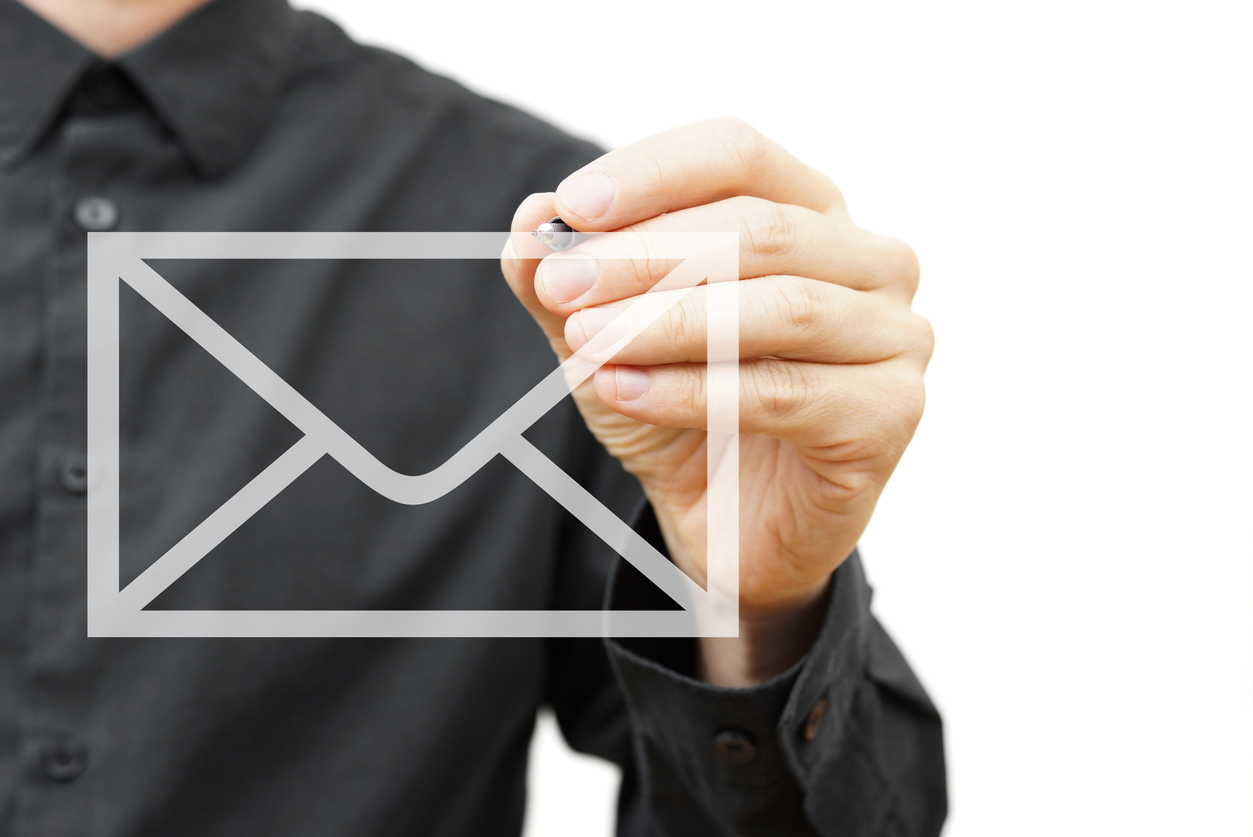Did you know that 20% of European companies blame customers who pay late or not at all for having to make redundancies or freeze recruitment in the last decade? No wonder so many businesses are turning to payment reminders and bill alerts to encourage customers to settle on time. But when it comes to choosing between letter and email, which reminder is more effective?
I’ve identified ten pros and cons for you. At the end, you’ll find my conclusion.
1. Speed
Send a payment reminder by letter and it may be a few days before your customer sees it (it’s called snail mail for a reason). Of course, some national postal services are more efficient than others. In the US, for example, it can take three days or more for a letter to arrive at its destination.
Well, it’s a big country…
Email reminders, on the other hand, are delivered immediately. In terms of speed, email wins hands down.
2. Cost
When sending letters, you must cover the cost of the paper, envelopes, ink and postage. If you want to use recorded or express delivery, or enclose a copy of the invoice, that’s an additional cost.
Send out payment reminders by email, however, and the cost is far, far less (the biggest cost is your monthly license for the email reminder service).
3. Convenience
Although both letter and email reminders can be automated, emails are arguably much simpler and faster to process. What’s more, they can easily be scheduled to arrive on a fixed number of days before or after the due date and at a time when your customers are most likely to check their inbox.
But it’s not just businesses that appreciate the convenience of emails. So do most customers. They can open emails at home or on the move. Afterwards, they can file them with a free cloud service like Dropbox, ensuring the information is always to hand.
Finland, Denmark, Luxembourg, the Netherlands, Sweden and the UK has the highest percentage of mobile internet use in the European Union in 2016. More than three quarters of individuals aged 16 to 74 use the internet while on the move.
Source: Eurostat
4. Urgency
While it’s true that emails offer a faster delivery method, some people feel that they don’t have the same sense of professionalism or urgency that letters do. In the minds of many—arguably older—customers, a letter carries more “significance” than an email, probably because we receive far fewer letters these days.
It may also be the case that, in some countries, companies threatening legal action over unpaid debts may be obligated to correspond via letter rather than email.
Whether sending a reminder by email or letter, you can underline the seriousness of the situation by using a more formal tone and style. You can also explain the consequences of late payment.
Even so, overcoming the perception of some customers that emails aren’t as urgent may be difficult. So, for final reminders especially, letters still probably beat emails.
5. Inbox overload
Send an email to your customer and it’s likely to be one of tens or more that they receive that day. Many of us suffer from inbox overload, so the chances of an email being overlooked or deleted are perhaps greater than those of a letter.
Mind you, one could argue that individuals who have debts piling up are likely to be stuffing unopened mail at the back of a drawer…
To ensure your emails are not ignored, send it at the right time of day, make your company name visible and the subject line clear (e.g. “Energy bill overdue” or “Automatic bill payment due on [date]”).
In addition, make sure your emails are mobile responsive so that they can be read easily on a mobile device.
6. Accessibility
Some of your customers may not have access to email, particularly if they are elderly, deprived, poorly educated, disabled or live in a rural location. Don’t underestimate the number of people that fall into these categories.
Around 13% of Americans do not use the internet. In the UK, 10% of households do not have Internet access, while 22% of disabled adults have never used the internet. In Germany, approximately 12% of the population do not use the internet. (2016)
Of course, for those customers who do have internet access (probably the larger proportion of your customer base), email reminders are extremely handy. They can be viewed anytime, anywhere and on any device.
7. Delivery rates
Delivery can’t always be guaranteed with either email or letters. To begin with, you need the correct address. But even if you do have the correct address, there’s a possibility that the reminder may still go astray.
Emails can end up in the customer’s spam folder if the Internet Service Provider (ISP) or even the customer labels it as junk mail. Letters can get lost between your offices and the customer’s home, and less-than-honest customers can deny ever receiving the letter in the first place.
Working with a premium email reminder service provider goes a long way to getting over the spam problem. These companies can work within an ISP’s set of complex spam rules and use your company’s domain, which slashes your ‘designated as spam’ risk.
8. Measurable results
One big advantage of digital communication is that you can check at any time whether the email has been bounced, opened or clicked on. There’s no need to wait for a payment that doesn’t come in.
And if the email isn’t delivered or opened, you can simply call or text the customer instead (by working with a multi-platform provider, this follow up through a different channel can be done automatically).
With letters, however, it’s a case of waiting for a phone call or a payment from your customers, which means it could take a few days before you realize your letter has been lost, mislaid or ignored.
9. Immediate response
If you want your customers to respond quickly, email is your best bet. Automated email reminders can include a pay link, and since most smartphones have banking apps, all your customer has to do is click on the link, view the invoice and make the payment.
A letter, however, is likely to be placed on a “things to do later” pile. And if you haven’t enclosed the invoice, you could be giving your customer another excuse for not paying.
10. Sustainability
Emails are undoubtedly “greener” than letters. If your company is serious about reducing paper consumption, email is a no-brainer.
So, which is the more effective payment reminder: letter or email?
Having taken you through the pros and cons, I think it’s safe to say that email has a distinct advantage over letters in terms of cost, speed and convenience. What’s more, those that include a pay link enable customers to pay immediately. That advantage alone makes it a winner in my mind.
Survey after survey tells us that today’s consumers want fast and easy access to companies. Emails, therefore, are just the ticket. But those same surveys also tell us that consumers want options, so don’t rule out letters altogether. They still have their place.
Whichever version you choose, make sure you have a clear overview of your customer base, consider individual communication and payment preferences, and offer a range of options. That will please your customers and your finance director.
About the author

Daniël Schurr
Product Owner – Reminder services
I’m Product Owner of our Reminder services and head of Support and Operations at Alphacomm. What I really like at Alphacomm is that we take on complex challenges that force me to stay on top of my game and push me to develop myself and my skillset continuously.


